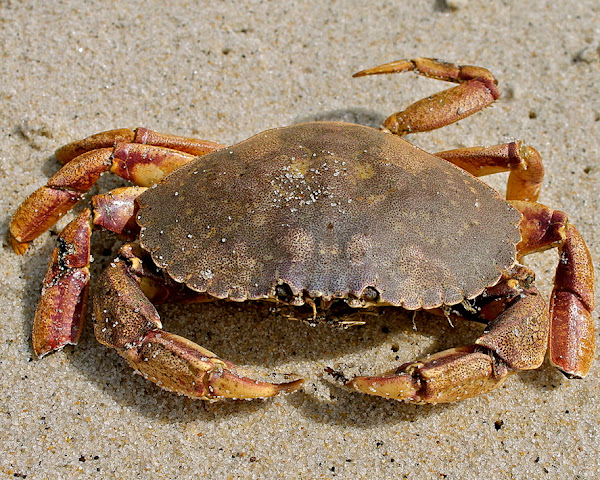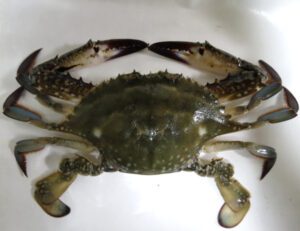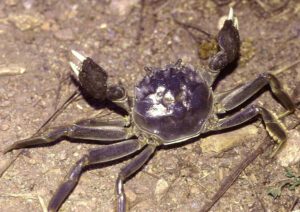The Jonah crab is a marine brachyuran crab. It generally inhabits waters along the east coast of North America from Newfoundland to Florida. These crabs are found primarily at depths of 50-300 meters, off Nova Scotia. The preferred habitat of these crabs varies from rocky substrates in coast areas, to silt and clay bottom on the continental slope. Read some more information about this crab species below.
Jonah Crab Characteristics
The Jonah crabs have an oval-shaped carapace with arough texture. They have two large, powerful pincers and eight short, thick legs. There are small light spots on their carapace. And they have robust claws with dark brown-black tips. In case of coloration, these crabs are generally red on top and yellowish on their underside and sometimes with a motting of yellow and red on their legs. The male Jonah crabs are larger in size than the females. The females rarely exceed 15 cm carapace width, while the maximum reported carapace width for the males is 22.2 cm. Photo and info from [1].

Diet
The diet of the Jonah crab consists of arthropods, mussels, snails and some algal species.
Uses
The Jonah crab is mainly used for food. It is very popular as food in some countries.
Special Notes
The Jonah crabs are economically important. They have been traditionally fished since the 1960s as a bycatch to inshore and offshore lobster fisheries. The Jonah crabs have been reported at depths of up to 750 meter. Their habitat preference range from rocky substrate in Rhode Island and the Gulf of Maine to silt and clay substrate on the continental slope. The estimated average preferred temperature of these crabs is 15.4 °C. However, review full breed profile of the Jonah crab in the following table.
| Name | Jonah Crab |
| Kingdom | Animalia |
| Phylum | Arthropoda |
| Class | Malacostraca |
| Order | Decapoda |
| Family | Cancridae |
| Genus | Cancer |
| Species | C. borealis |
| Binomial Name | Cancer borealis |
| Other Names | None |
| Breed Purpose | Food |
| Special Notes | Economically important, traditionally been fished since the 1960s, fished as a bycatch to inshore and offshore lobster fisheries, habitat preference range from rocky substrate in Rhode Island and the Gulf of Maine to silt and clay substrate on the continental slope, estimated average preferred temperature of these crabs is 15.4 °C |
| Breeding Method | Natural |
| Climate Tolerance | Native climate |
| Body Color | Generally red on top and yellowish on their underside and sometimes with a motting of yellow and red on their legs |
| Rarity | Common |
| Availability | America |






